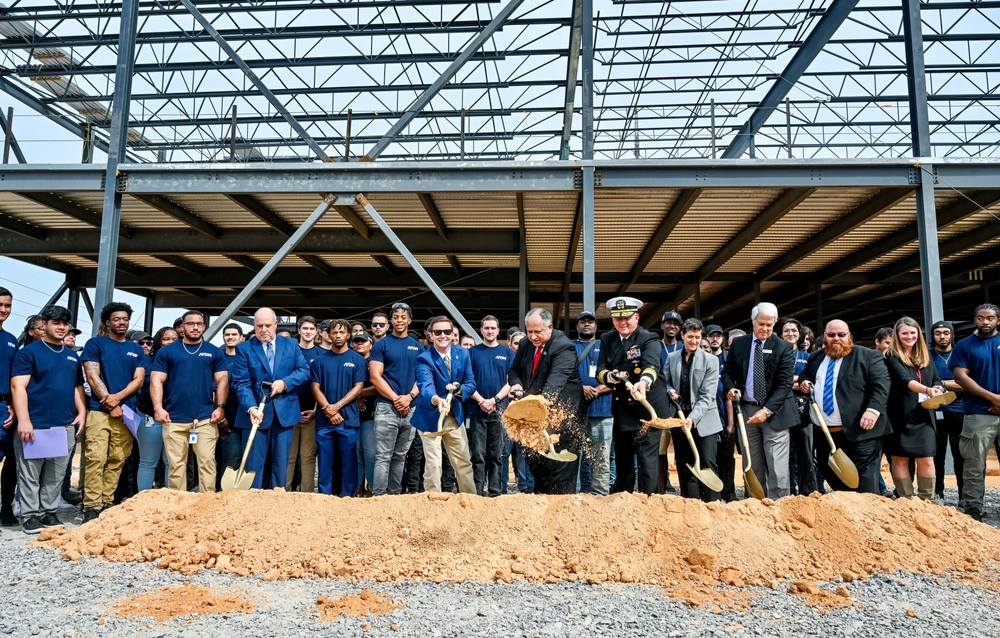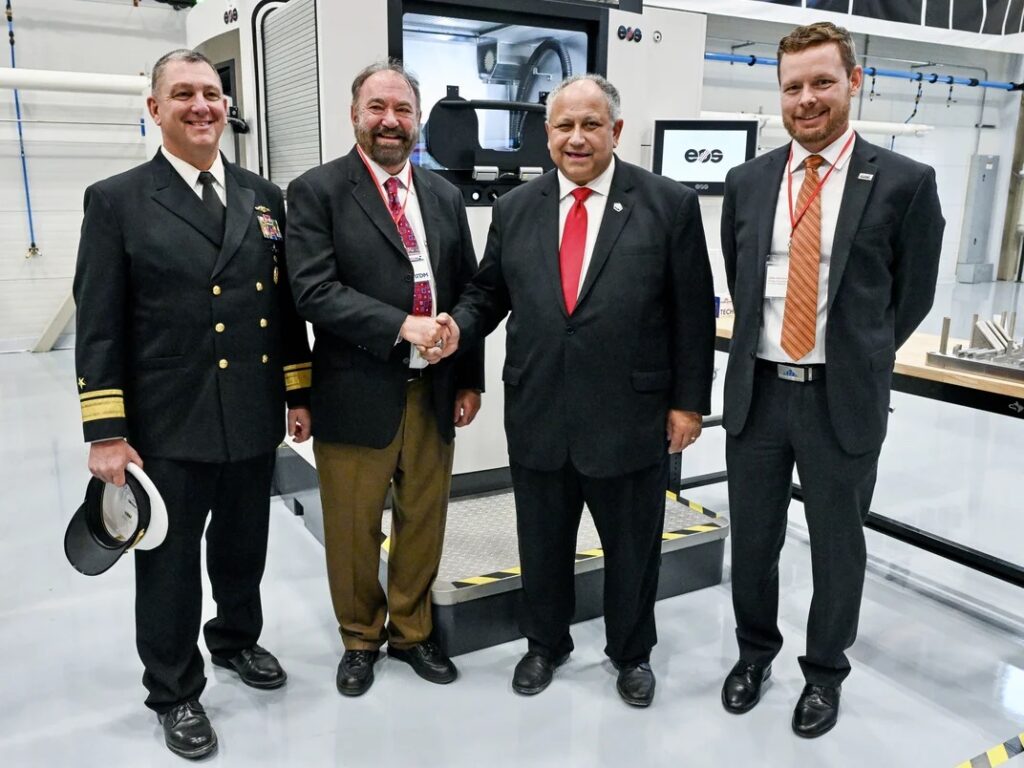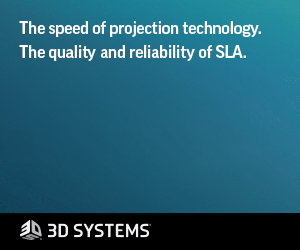Navy’s Afloat Additive Manufacturing Program Creates Scalability Model for 3D Printing Industry
A story published this week in National Defense spotlights a new Department of Defense (DoD) program of record (PoR) for fiscal year 2024, the Navy’s Afloat Additive Manufacturing (AM) Program. For the most part, the details of the article may not be too surprising to readers of 3DPrint.com, as I and other writers have been closely documenting the US Navy’s accelerated AM buildup over the last couple of years.
At the same time, the article nicely encapsulates the broader trajectory of that buildup, and provides key details concerning how the Afloat AM Program should continue to evolve into the near future. Indeed, far beyond any specific application or use-case, the very existence of the Afloat AM Program, itself, is the most important thing the Navy has done to advance the AM industry.
Scaling an Idea
Notably, although it may not have become a PoR until this budgetary year, the Afloat AM Program is not, in principle, new. And that’s why it’s succeeding: it represents the culmination of years of work, with many individuals cultivating the objective gradually, a little at a time, until every necessary component was mature enough to be fitted into a cohesive strategy.
Even the name is not new, with a quick Google search revealing that as long ago as 2020, a presentation by Naval Sea Systems (NAVSEA) Command referred to an “Afloat Advanced Manufacturing Strategy”, which set its ultimate goal as making the activities encompassed by the strategy part of their own PoR. In this sense, the Navy has demonstrated what it takes for a giant organization to bring a transformative concept to scale, in this case, the concept of being able to produce for seagoing vessels — and on those vessels — with as much agility as can be supported by existing technology.
It’s not simple, and it’s not easy. Even now, having achieved many significant examples of early success, the challenges inherent in making any changes at all within such a massive bureaucracy present roadblocks to expanding the Navy’s activities beyond where they stand now.
On the other hand, it is nonetheless clear that success is breeding success for the Navy, and those same early victories are enabling the branch to steadily build on the foundation it has laid out. In the budget proposal for 2025, the Navy is asking for enough funding “to install 40 to 50 polymer printers and 10 metal [AM] systems on aircraft carriers, ships and submarines”, according to the National Defense article, while also continuing to expand its AM deployment onshore.
The Lessons for Other Enterprises
While the Navy in particular, and the DoD generally, are both certainly highly unique organizations, there are still lessons from the DoD’s buildup of the Navy’s AM capacity that are universally applicable. As EOS/Additive Minds’ Dr. Gregory Hayes told me in an interview recently, in reference to EOS’ work with the US Navy, “…I’d be lying if I said we weren’t influenced by that type of implementation model in our approach to other industries.”
Perhaps the most important aspect of the Navy’s AM buildup is the prioritization of workforce development, with AM at the core of initiatives like the Accelerated Training in Defense Manufacturing (ATDM) Regional Training Center (RTC) that broke ground last fall. The Navy plans to train 1,000 workers a year at the Virginia facility.
Along those lines, AM is not just a new technological field, but the centerpiece of a rapidly emerging, readily deployable curriculum for educating the next generation’s manufacturing labor pool. For DoD, AM is never just a way to make new parts: it is always simultaneously a way to make new workers.
Of course, DoD typically has a far easier time acting according to a long-term timeframe than an enterprise in the private sector, and, perhaps more so than any other angle involved in creating an industrial ecosystem, workforce development is a task requiring long-term efforts. On the bright side, however, the same dynamics driving DoD to act on its workforce development goals are pushing the federal government as a whole in that same direction, with state governments and industry associations getting on that same page, as well.
Thus, there is an increasing understanding within the entire business environment that acting with a mind toward the future is a necessity, and increasing levels of incentives available for companies to do just that. The Navy’s progress illustrates that the ideal approach in that context is to make sure you have the best personnel available, and to ensure you’ve achieved absolute success at one phase before complicating your objectives any further. But once you have achieved that initial success, keep moving forward aggressively, using all of the resources and experience you’ve gained as the basis for further momentum.
Know What You’re Trying to Do with AM
The most important lesson from the Navy, and the surest way to both build the necessary workforce and achieve initial successes enabling forward momentum, is to know in as detailed a way possible what you want to do with AM before incorporating it into your workflows. This is just as significant for OEMs to consider as it is for their customers: OEMs who can help their customers make a game plan in advance are putting themselves in optimal position to succeed, as well.
Referring back to that NAVSEA presentation from 2020, one of the slides provides particularly useful insight into how much foresight went into setting the stage for the Navy’s current activities. In a section entitled “Logistics Integration”, NAVSEA defined its “Motivation”, “Goal”, and “Approach”, for using AM:
- “Motivation: Growing application space for AM across the Naval Enterprise requires supply chain integration
- Goal: Data-driven AM part identification using automated logistics, supply and maintenance data
- Approach: Leverage existing databases and policies to integrate AM into the supply chain to promote improved agility, lower response times, and minimize brittleness”
As complicated and intricate a job as the Navy’s AM buildup has been, those three principles clearly unify all of the nuts and bolts, and the tireless work towards making those ambitious ideas a reality is exactly as effective as the clarity of the strategic vision allows it to be. Those three points are all the more useful, moreover, insofar as they rather directly apply to everything that all the other most important sectors in the AM user base are also trying to accomplish.
You don’t need the same level of resources as the Navy to incorporate the lessons of the AM Afloat Program into your workflows. You can achieve similar gains by matching the Navy’s vision, diligence, and enthusiasm.
Subscribe to Our Email Newsletter
Stay up-to-date on all the latest news from the 3D printing industry and receive information and offers from third party vendors.
You May Also Like
Powering the Future: EOS’s Fabian Alefeld on Additive Manufacturing
In the world of 3D printing, innovation is a constant. However, the industry faces a complex landscape marked by opportunities and challenges. In 2023, the global 3D printing market totaled...
3D Printing Webinar and Event Roundup: May 26, 2024
In the weekly 3D Printing Webinar and Event Roundup, ASTM’s AMCOE concludes its professional certificate course, while Solid Print3D will offer a masterclass on Form 4 materials. If you’re in...
ISRO Successfully Tests 3D-Printed Liquid Rocket Engine for 665 Seconds
On May 9, 2024, the Indian Space Research Organization (ISRO) successfully conducted a long-duration hot test of a 3D printed liquid rocket engine. The tested engine, known as PS4, is...
Printing Money Episode 17: Recent 3D Printing Deals, with Alex Kingsbury
Printing Money is back with Episode 17! Our host, NewCap Partners‘ Danny Piper, is joined by Alex Kingsbury for this episode, so you can prepare yourself for smart coverage laced...





































